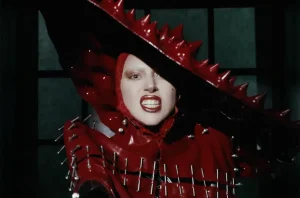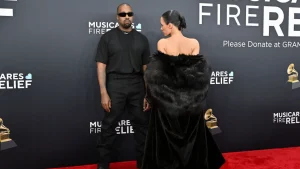
Eminem’s career has been one of controversial storms and boundless talent. Almost three decades since his explosive debut, Marshall Mathers shows no signs of slowing down as he stands among the dominant figures of hip-hop, pushing standards and breaking norms left and right. Known for his alter ego, “Slim Shady,” this Detroit-born rapper continues to fashion his turbulent growing-up years into riveting, often jaw-dropping, lyrical narratives.
It wasn’t until “The Slim Shady LP” in 1999 that he finally broke through with a record not just placing him above his peers through bare emotion but through technicality. While so many braggadocio MCs spoke about their success over hot beats, Eminem spoke of his problems with addiction, family woes, and the true cost of fame. The explicit nature of his lyrics outraged many, yet it was what put him on the map.

Eminem’s conceptual new album, “The Death of Slim Shady,” puts a face to the surface of his tangled relationship with Slim Shady, his most famous alter ego. Commercially, it hit the Billboard 200 straight out of the water, racing to the top. It marks the 11th No. 1 album for the rapper and further solidifies his reign at the top of the chart. According to Luminate analytics, the auspicious record generated more than 281,000 sales equivalents in the United States alone. That mammoth arrival nailed it as number one for rap albums in 2024.
The album opens with “Renaissance,” a track in which Eminem reflects upon the birth of Slim Shady. He openly confesses that it is not entirely a made-up character but an exaggeration of his personality. The song recaptures that hunger, that intensity of his old material, with an ‘old school’ voice acting within a brand-new flow. Next up is “Habits,” just more of the shocking humor and scathing social commentary we’re used to from Slim Shady: “This my s**t, I’m gonna spit it how I wanna spit it // Whoever gets offended, suck a d**k and f**k a critic.”
Probably the most talked-about track off the album is “Trouble”, which is the one where Eminem finally lets his Slim Shady persona lead the way. All the provocative and offensive lines were dropped without any constraint. It’s about the inner struggle between Marshall and Slim Shady as two sides of the same person that are nevertheless opposites, yet need the other to exist: “Little p***y, what’s wrong? Thought you was dreaming, huh? // When you gonna realize that we fuckin’ need each other?”
“Brand New Dance” sweeps listeners back to 2004, still brand-new enough but somehow extremely nostalgic. The song’s lively, and playful, with Eminem rhyming “grand mal seizure” with “grandma, tease her” in a way that hearkens listeners back to his older, more whimsical style.

Other tracks, like “Evil” have approachable rap with a stellar chorus. While “Lucifer” does dance a tightrope between offensive and fantastic. Another real standout would be “Antichrist,” which has an extremely catchy chorus with a baby harmonizing behind Eminem’s vocals. The song has already developed a large following of fans. “Roadrage,” while having a weak chorus, was still a fairly good song on the album.
In “Houdini,” Eminem captures the spirit of his late ’90s and early 2000s work, appealing to long-time fans. “Head Honcho” is an exercise in bilingual talent, featuring Ez Mil, as Ez performs smoothly and just quite effortlessly into Eminem’s verse.
“Tobey,” featuring Big Sean and Babytron, is just a straight rap track that doesn’t trigger a particular punchline full of edgy jokes. Eminem co-produced the evocative beat that gave weight to this collaboration. It closes with “Somebody Save Me,” an emotional, intense track by Eminem about his past battle with addiction. This is a song that vividly pictures a world where he had never made it out alive from the addictive struggle, set against a melancholic piano-driven melody.
“The Death of Slim Shady” is probably Eminem’s best work in ten years. The intricate flows, rhyme schemes—the wordplay just oozes with loads of skill. At the same time, however, one finds that Eminem’s offending content might turn away new fans if they are not paying attention to the concept of the album.

While Eminem insists on the vernacular experience of the narrative, others might question how well all of it ages or takes on artistic value. Much like his earlier works, the album takes the boundaries of acceptability to places that are at worst unacceptable. The ambition of his vision in telling the story of his internal struggle is admirable, but being a taboo isn’t what makes something praiseworthy in itself. Still, Eminem secures his legendary status among his peers with this technical demonstration. This album signifies a defining moment in assessing Eminem’s career, where he proved himself anew.
Check out more song reviews:







1 thought on “Eminem is back, back again with his 12th studio album: The Death of Slim Shady (Coup de Grâce)”